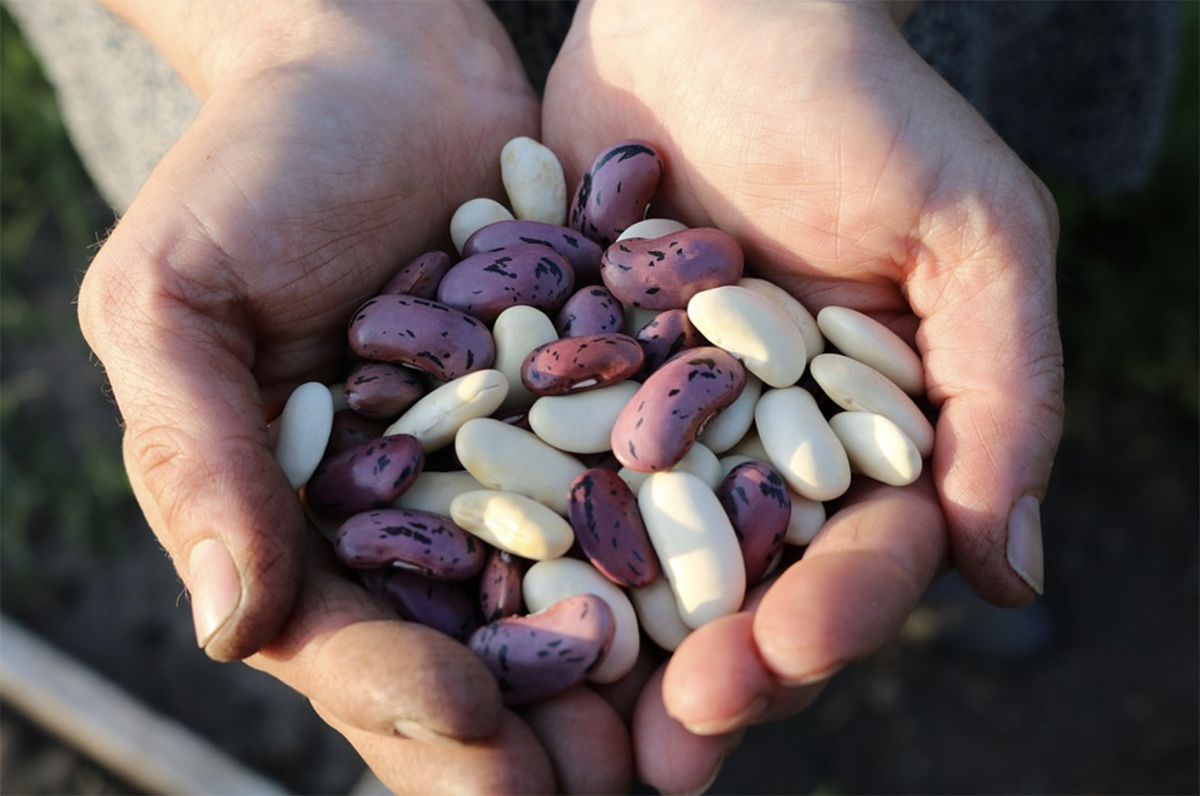January 25, 2023
Sustainable, delicious, and healthy, beans are a true superfood. So why are US consumers hesitatant to eat them? We look at research around the studied and recorded concept of ‘Bean Hesitancy’.


As populations grow and the call for sustainable agricultural practices becomes louder, we find ourselves being increasingly guided towards the next super crop, ethical practice, or healthy, proteinous foodstuff. However, we already have a delicious, affordable superfood that checks both the sustainability and high protein boxes and has been around for centuries.
Yet despite this, some US consumers are reluctant to fully embrace beans in their diets - so much so that a term has been coined: ‘bean hesitancy’.
Extensive research has gone into uncovering why, when beans have so many fantastic qualities and a high protein content, consumers may be shying away.
Bàlint Balàzs, a researcher at the environmental research group ESSRG, notes that even in Mediterranean countries, in which consumption is historically higher than in the rest of Europe, pulses are losing popularity.
Nina Ichikawa, Executive Director at the Berkeley Food Institute has done extensive research into what she believes is stopping us from including more beans in our diet, a phenomenon she calls ‘bean hesitancy’ or, in its most extreme form, ‘bean resistance’.
Liz Carlisle, Assistant Professor at the University of California, Santa Barbara, has also recorded this pattern in an informative booklet about lentils that she co-authored with Montana State University in 2016. Her research found that the biggest concern for Montana residents when it came to eating pulses was flatulence.
Balàzs agrees that flatulence is a leading fear when it comes to bean consumption. Other consumer concerns, such as not being familiar with cooking times and processes, were also apparent to each researcher.
Ichikawa, who has written extensively around the topics of agriculture and food, notices that cooking shows, food magazines and even up-and-coming health food restaurants, which one might think may be among the first to take advantage of this superfood, often overlook beans and pulses.
The great news is that the research on beans is extensive, consistent, and solidly supports them as a superfood.
Ichikawa tells Business Insider, "We don't need to research what they do in the soil — there's mountains of research proving that. We don't need to research what they do for the human body — there's mountains of research proving that. We don't need to research how many ways there are to cook it because there's mountains of cookbooks also proving that. But we do need to understand what is this hesitancy among Americans to eat beans."
As our populations and health preferences grow, there is an ever-increasing demand for diverse protein sources among consumers, something which concerns Ichikawa, who began researching American bean consumption in 2019 while working with the UC Berkeley Alternative Meats Lab. She continues:
"It just really distresses me when people are thinking that they need to spend billions of dollars on researching a vegetarian protein that will be affordable."
Balázs believes that there is a knowledge deficit when it comes to pulses, which adds to the belief that gas when eating beans is inevitable. He believes that a strategy of public education and informative marketing may be a way to solve this issue.
Balázs also notes that disinformation shared about pulses presents just as much of a problem. He uses the example that soaking and rinsing beans before cooking can reduce the chance of flatulence. Consumers are not necessarily made aware of this but will likely be familiar with jokes and children’s songs relating beans to flatulence.
It is also common for consumers to overlook the positive meaning behind the gas potentially linked to consuming legumes. The Bean Institute explains that beans contain non-digestible, fermentable fibers, which do sometimes cause gas. These fibers do not get digested in the upper part of the gut and instead arrive intact in the colon where they are fermented by beneficial bacteria. This fermentation process creates gas, which is actually a positive sign. It signals that our healthy bacteria are being fed well and that we are making the right food choices to maintain a happy gut.
Fibers from beans that manage to reach the gut intact also promote growth in our healthy microflora. This means that bean fibers are in themselves prebiotics, another product that consumers regularly purchase in capsule form.
"It just really distresses me when people are thinking that they need to spend billions of dollars on researching a vegetarian protein that will be affordable."
Researchers from Arizona State University and the University of Colorado carried out a study on the relationship between beans and gas. Participants were monitored over varying periods of time and completed questionnaires about their perceived flatulence rates, as well as other symptoms, such as bloating.
The results showed that less than 50% of the subjects reported increased flatulence from eating pinto or baked beans during the first week of their specific trial and only 19% reported a flatulence increase with black-eyed peas. Interestingly, a small number from the control group who ate carrots instead of pulses also reported increased flatulence, disproving the idea that beans and flatulence are exclusive.
The study also showed that, although some participants reported increased gas during the first 8 weeks of the trial, they experienced less gas after this point. Researchers believe that this proves that when beans are eaten as part of a regular diet, they can actually cause less flatulence and abdominal discomfort, reducing uncomfortable symptoms such as bloating.
This study concluded that, while various beans may react differently depending on individual gut health, concerns that beans cause more flatulence than other foods may be exaggerated and largely based on the experience of people who do not regularly consume beans. This shows us a preemptive cycle whereby it is not the eating of beans that necessarily creates ongoing gas but rather only eating beans occasionally. The solution? For less gas, eat MORE beans.
When beans are eaten as part of a regular diet, they can actually cause less flatulence and abdominal discomfort.
Researchers from Colorado State University, Fort Collins, looked at how consumers may be motivated into more pulse-centric eating patterns in order to benefit environmental and human well-being. They concluded that the adoption of better eating habits will follow the implementation of engaging outreach, focusing on the culinary versatility of pulses and showing how easily they can be included in meals and snacks.
Whilst sending the message to consumers that eating more pulses is better for the planet and healthier may work for some, the researchers believe that once people have a sense of their own autonomy when buying and cooking pulses, they will be more easily motivated by the sense of fulfillment they experience from contributing to environmental and economic sustainability.
Engaged and enthusiastic mainstream marketing around areas of consumer interest could therefore lead to pulses being fully appreciated for their taste and versatility and as a vital component of food security, health, and environmental sustainability. The great news is that the research on beans is extensive, consistent, and solidly supports them as a superfood.
Beans, although one of our most ancient foods, should be set to play a large part in the future of sustainable eating and agriculture.
Disclaimer: The opinions or views expressed in this publication are those of the authors or quoted persons. They do not purport to reflect the opinions or views of the Global Pulse Confederation or its members.